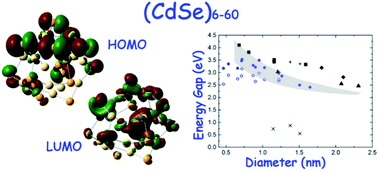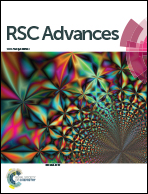Size dependence of the structural, electronic, and optical properties of (CdSe)n, n = 6–60, nanocrystals
Abstract
In an attempt to reconcile conflicting results in the literature and to uncover general trends in terms of size of (CdSe)n nanocrystals, we have systematically studied, within the framework of ground state and time dependent Density Functional Theory (DFT), the electronic, optical, cohesive, and vibrational properties of representative (CdSe)n nanocrystals of various sizes (n = 4–60) as a function of size, applying fully relaxed and systematically generated geometries. Although we have found good agreement with particular high-level calculations and selected experimental results, our calculations revealed large deviations, especially for small nanoparticles, from alternative theoretical and experimental data. We have rationalized these discrepancies by showing that the choice of the theoretical method or of the DFT functional could have a strong impact on the value of the calculated energy and optical gaps; and that the accuracy of the experimental results could be hindered by uncertainties in determining the nanoparticle's “diameter” and by the presence of passivating ligands. We illustrate that the relative insensitivity of the gap to the presence of particular organic ligands, such TOPO and OPMe3, is largely related to the weakness of their interaction and the different spatial localization of the frontier orbitals.


 Please wait while we load your content...
Please wait while we load your content...